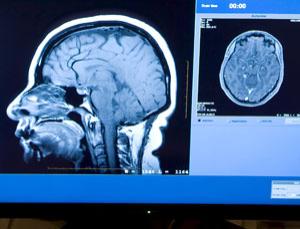
Some of the hottest results in the nascent field of social neuroscience, in which emotions and behavioural traits are linked to activity in a particular region of the brain, may be inflated and in some cases entirely spurious.
So say psychologist Hal Pashler at the University of California, San Diego, and his colleagues, who examined more than 50 studies that relied on functional magnetic resonance imaging (fMRI) brain scans, many published in high-profile journals, and questioned the authors about their methods.
Pashler's team say that in most of the studies, which linked brain regions to feelings including social rejection, neuroticism and jealousy, researchers interpreted their data using a method that inflates the strength of the link between a brain region and the emotion or behaviour.
The claim is disputed by at least two of the critiqued groups. Both argue that Pashler has misunderstood their results and that their conclusions are backed by other studies.
In many of the studies, researchers scan volunteers' brains as they complete a task designed to elicit a particular emotion. They then divide the images from the scans into cubes called voxels, which can each contain millions of neurons, and attempt to correlate the activity of particular voxels with emotional changes reported by the volunteers.
The problem arises when researchers attempt to calculate the strength of this correlation. This has to be done in two stages. The first is to identify regions in which the correlation between voxel activity and the emotion exceeds a certain threshold. In the second stage, the researchers assess the strength of the correlation in that region.
Pashler recommends that two independent sets of scans be used in these two stages. If the same set is used for both, there is an increased risk of misinterpreting random noise as a genuine signal.
Yet in almost 30 of the papers Pashler's team analysed, researchers used the same scans to identify the voxels of interest and determine the final correlation. This inflates the correlation above its true value, and has the potential to produce apparent links between emotions and brain regions when none exists, Pashler's team claims.
To demonstrate their point, the team used this technique to search for correlations in simulated brain scan data. This appeared to reveal statistically significant correlations, when in fact there were none. The critique has been peer-reviewed and accepted for publication in Perspectives on Psychological Science.
Many researchers are not surprised by Pashler's conclusions, as the more rigorous analysis that his team recommends requires more data. It is expensive to run fMRI scans and difficult to find volunteers.
Nikolaus Kriegeskorte at the US National Institute of Mental Health in Bethesda, Maryland, is trying to gauge the number of neuroscience papers that use this method, because he also believes it is problematic. And in 2007, researchers withdrew part of an fMRI paper published in Nature Neuroscience (DOI: link) after another researcher showed that random noise could have produced the reported correlation.
The researchers criticised by Pashler strongly contest his team's conclusions. Tania Singer at the University of Zurich in Switzerland says Pashler's survey questions were "ambiguous and incomplete", causing him to misjudge the way her group corrected for random noise.Matthew Lieberman of the University of California, Los Angeles, says that even if his 2003 study in Science (DOI: link) inflates the strength of the link between feelings of rejection and physical pain, the link itself stands, as studies using different methods also identified it.



Reader Comments
to our Newsletter